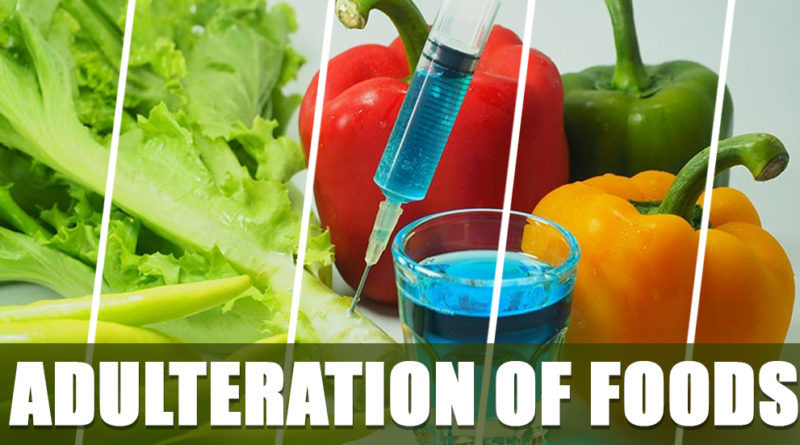Adulteration in food has become a major concern affecting people’s health and nutritional status.
Food adulteration can be intentional, unintentional or accidental.
Intentional adulteration is a process of deliberately adding unwanted substances to food in order to lower its cost, which also lowers the nutritive value and may even cause toxicity leading to ill health consequences .
“Adulterants” are the substances that are added to food which have similar appearance/colour or composition.
Nowadays ,the practice of adulteration has become so common, that it’s become important to know about the common adulterants and simple testing methods to be sure.
This table below shows common adulterants used in food articles and easy testing methods.

|
Food Article |
Adulterant |
Testing Method |
|
Milk |
Starch |
Add a few drops of iodine solution in the milk sample. If it turns blue , it indicates presence of starch. |
|
Urea |
Take a teaspoon of milk in a test tube. Add 1⁄2 teaspoon of soybean or arhar powder. Mix the contents well, dip a red litmus paper in it. If colour changes from red to blue , it indicates the test is positive. |
|
|
Sweet curd |
Vanaspati |
Take1 teaspoon full of curd in a test tube. Add 10 drops of hydrochloric acid. Mix the contents shaking the test tube gently. The red colouration indicates the presence of vanaspati in the curd. |
|
Channa or paneer |
Starch |
Boil a small quantity of the sample and add iodine to it, if it turns blue, it indicates the presence of starch |
|
Ghee |
Vanaspaty or Margarine |
Melted ghee in equal quantity with HCl acid, pinch of salt and crimson colour shows presence of margarine. |
|
Honey |
Chalk powder |
Dissolve a little amount sample in water in a test tube, chalk powder settles down. |
|
Atta , maida , Suji |
Sand, soil, insects , rodent hair |
Visual examination |
|
Pulses |
Lead chromate |
Shake 5 gm of pulse with 5 ml of water and add a few drops of HCl. Pink colour indicates Lead Chromate. |
|
Green peas |
Artificially coloured |
Take a little amount of green peas in a 250 ml beaker, add water to it and mix well. Let it stand for half an hour. Clear separation of colour in water indicates adulteration. |
FSSAI Manual, 2012.
Health Consequences of having adulterated food
Immediate Effects
- Sensitive stomach /Diarrhoea/ indigestion / cramps
- Food poisoning
- Infections with usually fever and chills
- Skin diseases / allergies - rashes
Long term effects
- Pectic ulcer
- Heart diseases
- Vision problems
- Liver problems - cirrhosis
- Kidney damage
- Blood disorders
Thus, adulterants are being used in Indian societies as quality control measures are not followed stringently and lack of audit by regulatory authorities. Furthermore, people are not aware of quality assurance logos, hallmark and regulatory bodies certifications. Adulterants can lead to many ill effects on health and its important to be aware about the current certifications and should never buy open food articles or without any quality assurance.
REFERENCES
Quick tests for some adulterants in food. Instruction Manual.FSSAI Manual, 2012.
Bansal S. Et al (2015).Food Adulteration: Sources, Health Risks and Detection Methods.Critical Reviews in Food Science and Nutrition

